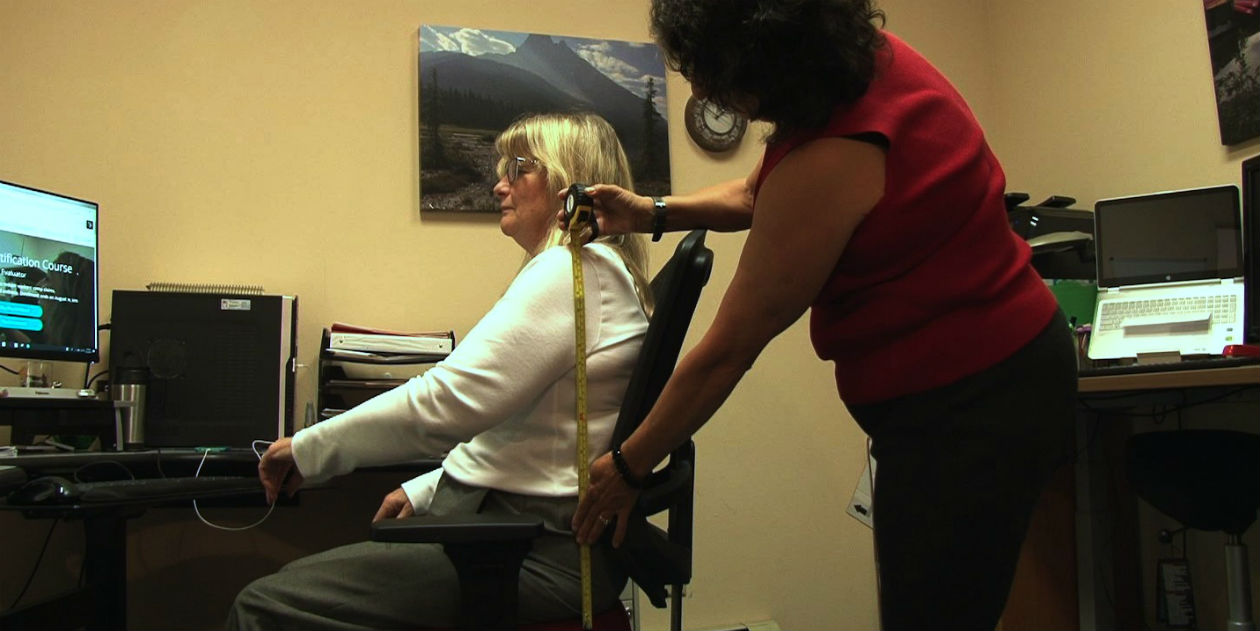“We all know how to do our jobs, but no one has ever taught us how to work safely and with good ergonomics." ~ Alison Heller-Ono MSPT, CPE

Employers today face an ever-changing, complex work environment. The challenges are significant, ranging from new employment laws to changing work schedules allowing employees to work from anywhere at any time to a deepening multi-generational workforce. Beyond the human aspect is the rapid advances in technology, which we all must embrace. Employers must take these factors into account as the socio-technical system of work evolves, becoming more complicated into the next decade.
A common theme is the need to work in a safe, healthy, and productive manner. To achieve harmony within the complexity of work, employers must embrace organizational ergonomics.
Ergonomics is a Powerful Change Agent
Ergonomics is a powerful change agent to drive both organizational improvement and individual productivity. Yet, if you ask most employees if they know what ergonomics is, or if their employer has provided office ergonomics training, a majority will respond no.
Ergonomics is a human-centered design. It’s the relationship between you and your work environment-- including the tools and materials you handle and the tasks you perform. Ergonomics seeks to maximize your efficiency, productivity, safety, and health in performing work.
Employees lack the awareness to recognize when repetition is fatiguing their muscles or when prolonged sitting is affecting spinal health. It’s not intuitive to know how to adjust an ergonomic chair effectively. In a 2016 study from Cornell U., "What am I Sitting On? User Knowledge of Their Chair," Dr. Alan Hedge studied how over 1004 office workers at 23 different organizations used their chairs. The only thing employees understood or utilized on a chair was the height mechanism and possibly the armrests!
And the chair is not the only perplexing equipment or furniture employees are stymied. Many employers are providing adjustable-height sit-to-stand workstations. Yet, employees are standing too long or fail to set the height correctly.
The most glaring problem is that employees don’t know how to use the ergonomic equipment and technology provided to them. Chalk it up to a lack of understanding the principles behind good ergonomics. Employers would be wise to offer office ergonomics training for all workers who use a computer and an ergonomic chair as essential productivity tools.
Proper Equipment and Setup are Key
It's been over 70 years since the science of ergonomics was first used to influence the way we work. Yet, ergonomics remains neither intuitive nor common sense. For it to change, the science of ergonomics must be commonly taught and commonly practiced. Unfortunately, we are not there.
There is evidence of the lack of integration of sound ergonomic principles all around us. Walk into any new building in the USA. While it may look beautiful, trendy, and modern, chances are it is far from ergonomic. The cool ball chairs cause falls and poor posture. The ergonomic chairs selected are “one size fits all” and won’t fit the smallest or largest workers. The sit-to-stand desk converters so popular today, don’t go low enough or require strength and reach to lift beyond many users capacities. The latest open office environment contributes to headaches, frustration, and lost productivity from a lack of privacy and ineffective lighting design.
Most employers fail to invest in seeking the consult of an ergonomist in the design phase of their projects. Instead, they take the advice of either an architect or an interior designer who appreciates how things look rather than fit for function. Or they shop online and purchase poorly fitting, inferior, cheap products with no warranty or ongoing customer service support. These decisions are appealing to an employer but often miss the mark in achieving a human-centered design that meets the needs of employees.
Ergonomics Education Has Never Been So Accessible
Scenarios such as those above show the application of ergonomics is not yet sufficiently integrated into the office workplace. Today’s workforce is prime for online ergonomics training and education. Savvy employers use online learning to assure decision-makers understand ergonomic principles for work integration. Online training teaches employees workstation self-correction, self-care, and safe, ergonomic work practices. To truly benefit, everyone must understand the importance of ergonomics from the employee to the supervisor to IT, Facilities, and Purchasing to the HR Manager and up to the CEO of the organization.
As we move into the 21st century, organizations should know and embrace the value of good office ergonomics and should integrate and practice it at all levels daily. By doing so, employers will achieve a truly ergonomic, healthy, and productive workplace.
To integrate ergonomics into the socio-technical workplace of the 21st century, consider training an "ergo-insider" at your organization to perform preventive evaluations and assist employees with workstation set-up. Our upcoming training to become a Certified Office Ergonomics Specialist begins on January 14, 2020. Improve employee accountability in office ergonomics training by providing online learning. With 2020 upon us, now is a good time to contact Worksite International to discuss your organizational goals in setting up an ergonomics process with in-house expertise.
Want to read more? See my recent editorial post featured in USA Today on December 31st, 2019 and through MediaPlanet, Future of Business promotion. Why Modern Ergonomics Lacks Common Sense.


Comments